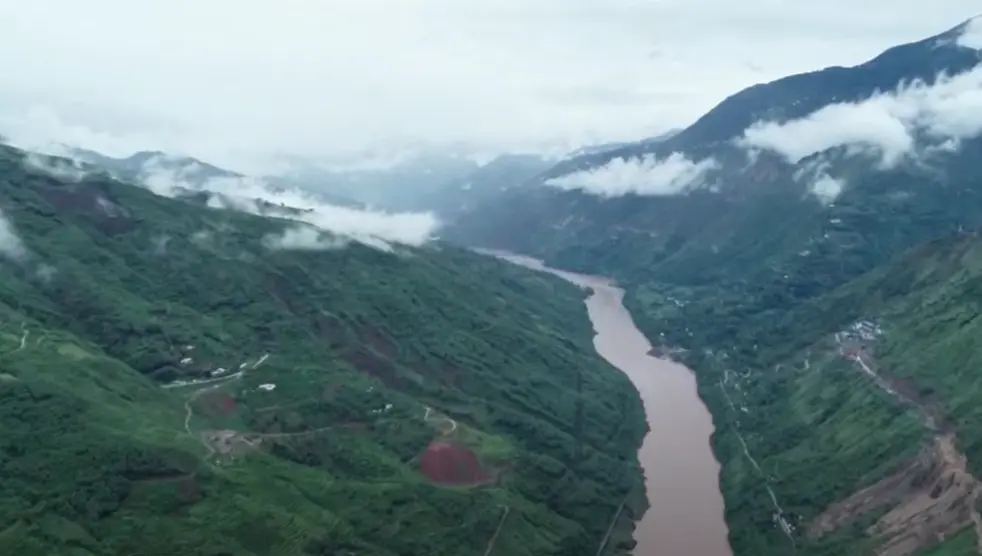
China’s mega dam in Tibet sparks fears of water war in India, threatening river flow and regional stability.
Dam of Discord: China’s Mega Project Sparks Water War – A new mega dam being built by China in Tibet has triggered serious concerns in India. Experts and officials fear that the massive hydropower project could reduce water flow into India’s northeast, especially during dry seasons. With tensions already high between the two countries, this dam could become a flashpoint in future disputes over water, a resource more precious than oil in many parts of the world.
Let’s break down what’s happening, why it matters, and how India is responding.
Dam of Discord – What Is China Building and Where?
China has started constructing what could become the world’s largest hydropower dam on the Yarlung Zangbo River in Tibet. This river flows into India as the Siang and later becomes the Brahmaputra, a lifeline for millions of people in Arunachal Pradesh and Assam.
The dam is being built near the border, just before the river enters India. It’s expected to cost nearly $170 billion and generate around 300 billion kilowatt-hours of electricity annually. China says the project is part of its clean energy goals, but India fears it could be used to control or even weaponize water flow.
According to Indian government analysis, the dam could divert up to 40 billion cubic meters of water, more than a third of what India receives at a key border point. During dry seasons, this could reduce water flow by up to 85%, affecting agriculture, drinking water, and industry in India’s northeast.
Why India Is Worried
Water from the Brahmaputra River supports over 100 million people across India, China, and Bangladesh. If China controls the flow, it could:
- Cause droughts in India by restricting water during dry months
- Trigger floods by releasing excess water suddenly
- Disrupt farming and industry in Assam and Arunachal Pradesh
- Create strategic pressure during political or military tensions
India’s concerns are not just environmental, they’re strategic. The river flows through Arunachal Pradesh, a region China claims as its own. By controlling the river upstream, China could gain leverage over India in future border disputes.
India’s External Affairs Minister S. Jaishankar recently raised these concerns with his Chinese counterpart, urging transparency and cooperation. But Beijing has not released detailed plans about the dam’s design or water storage capacity.
India’s Response: Building Its Own Mega Dam
To counter China’s move, India is fast-tracking its own dam project, the Upper Siang Multipurpose Storage Dam in Arunachal Pradesh. If completed, it would be India’s largest dam, with a storage capacity of 14 billion cubic meters.
The goal is to:
- Store water during monsoon and release it during dry seasons
- Protect against floods caused by sudden Chinese releases
- Ensure water security for cities like Guwahati, which could lose up to 25% of supply without the dam
Survey materials have already been moved to the site under armed police protection. Meetings have been held at the highest levels, including one chaired by Prime Minister Narendra Modi.
However, the project faces strong resistance from local communities. Villagers fear displacement, loss of farmland, and damage to their way of life. The Adi tribe, which lives near the proposed site, has voiced fierce opposition, saying thousands of families could be affected.
What’s at Stake: Water, Peace, and People
This situation is not just about two dams, it’s about the future of water sharing in South Asia. As climate change worsens and populations grow, water will become even more valuable. Countries that control rivers could hold power over those downstream.
Experts warn that building mega dams in seismically active zones like Tibet and Arunachal Pradesh could also increase the risk of landslides, floods, or earthquakes. Without proper planning and cooperation, both countries could face disasters.
India now faces a tough choice: protect national security or preserve local communities. While compensation packages and relocation plans are being discussed, delays could leave India vulnerable if China finishes its dam first.
The world is watching. Will this be a turning point for regional cooperation or the beginning of a water war?
Also read – Agricultural Crisis in Pakistan – India Water Strategy: Baglihar Dam Halt Sparks Diplomatic Standoff
Stay updated with latest updated news blogs on Rapido Updates.